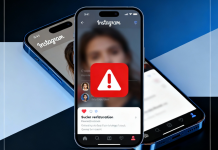Creating successful ads on Instagram is not a tough job, as audiences are focused on purchasing from the platform. With a budget allocated for social media marketing, then you must go for running Instagram ads. Paid ads on Instagram are posts where the brands make payments to showcase their products to the audience on the platform.
Like Facebook, Instagram ads are present in the app, in-home feeds, explore, stories, and more. They are similar to regular posts but with a “Sponsored” label beneath your profile name to reveal an ad. They also include additional features compared to regular posts, like links, product catalogs, and call-to-action buttons.
According to a survey, 27% of people discover new brands and products via paid ads, and Instagram ads are bound to reach 1.2 billion people across the globe. Two ways to create ad campaigns on Instagram are promoting the post of your brand and Ads Manager. In this article, we shall walk through these methods,
1. Promote a Post-in-app
The best way to initiate advertising is by promoting your existing posts on Instagram, similar to Facebook’s Boost Post feature. When there is a post with high performance concerning engagement, advertising is an easy and quick way to build a post’s success and showcase it to audiences that are not following you. For that, you must own a business account on Instagram; also, link your Facebook Business account to your Instagram Business account. And, tap the “Promote” button below the post that you want to change to the ad. Then, you will have to select your preferred budget, destination, audience, and length of time to run your ad.
At last, click “Create Promotion.” The ad gets scrutinized and accepted by Facebook. When the ad is live, make sure to track the output of the advertisement under the “Promotions” section of the Instagram account.
2. Create Ads on Instagram using Facebook Ads Manager
Use Facebook Ads Manager to acquire the most of ad targeting, reporting abilities, and creativity. Let us know more on this through a step by step guide,
Step 1: Decide on Your Objectives
To begin, head to “Ads Manager” and tap “+Create.” Then, you must select your objectives for the campaign from the category. Here is a quick study on each of the objectives:
- Brand awareness: Maximize your product visibility or brand among the audience that has not encountered it yet.
- Reach: Display the ad to your target audience as much as possible.
- Traffic: Drive taps to your app, website, or any of your links.
- App Installs: Make the audience download the app.
- Engagement: Boost likes, comments, shares on ads, and event responses.
- Video Views: Obtain views to videos from audiences that are likely to view.
- Lead generations: Collect personal details from interested audiences.
- Messages: Make the audience send a text to your business account.
- Conversions: Increase sales or sign-up to your app or website.
- Product sales: Drive sales from your online catalog.
- Traffic to Store: Direct audience to your physical store.
Once you have chosen the objectives, you will have to name the campaign. Put a campaign-specific name to measure your campaigns. Lastly, you can turn on the option Budget Optimization for Campaigns, which lets Facebook’s algorithm identify how to use your budget on ad sets.
Step 2: Select your schedule and budget.
Here, you will have to select the amount you will spend and the campaign’s duration. Two options for budget,
- Daily Budget: Put a total spend for the day, helpful for non-stop ads.
- Lifecycle budget: Set an accurate expense for your entire campaign. It is beneficial for ads with the exact close date.
With Ad Schedule, you can opt to promote ads constantly or at specific times of the day. For instance, you could run a food packaging business, placing ads when the audience would place orders during the evening. While you tune in to these options, you notice the “Audience Definition” & “Estimated Daily Results” that show you the forecasted reach for the selected budget.
Step 3: Determine Your Audience
In this step, you need to describe your audience by selecting “Create New Audience” or a “Saved Audiences.” When you have data on custom audiences or audiences that did well from past campaigns, then “Saved Audiences” are helpful. Else, you could create a new audience depending on demographics, behavioral targeting, and interests. Also, you can choose “Dynamic Creative,” upload different headlines, visual effects to get automatic Instagram likes for social proof and increase engagement to your posts. Facebook would set up combinations optimized for potential audiences.
Step 4: Choose the Ad Placements
In this section, you could select where to place your ads. Two ways to do this:
- Automatic Placements: The ads get displayed to your audience where they tend to perform well.
- Manual Placements: You could select particularly where to display your ads. To show ads just on Instagram, then you could choose it with manual placements.
Step 5: Create the Ads
So, create the Ads by selecting the Facebook account and Instagram Profile correspondingly. The next step, choose your format for the ad. Next, move forward to fill in the other details below Ad creative:
- Select your photos or videos
- Put the ad copy
- Choose payment options
- Examine the ad
- Tap Confirm.
In this step, choose the CTA button and provide a URL to drive the audience to your website. To monitor conversions from the ad, you need to select Facebook Pixel under the Tracking tab. When you connect to your app or website, Facebook pixel lets you check insights on audience interaction with your brand once they tap on your ad. Finally, when done, press “Confirm” to run the ad.
Conclusion
Spending money on Instagram ads could be a game-changer for your business, as it lets you build your reach and increase brand awareness. Make sure to handle your expectations on the first ad campaign; consider it an experiment to understand how it works and how to best use it for the next campaigns. Get Started with a powerful Instagram ad campaign!
Author Bio
Sarah James is a Content Writer at VoxCorp with more than 8 years of experience in Social Media Marketing. In her free time she loves to talk with her friends on food, travel and ancient culture.






